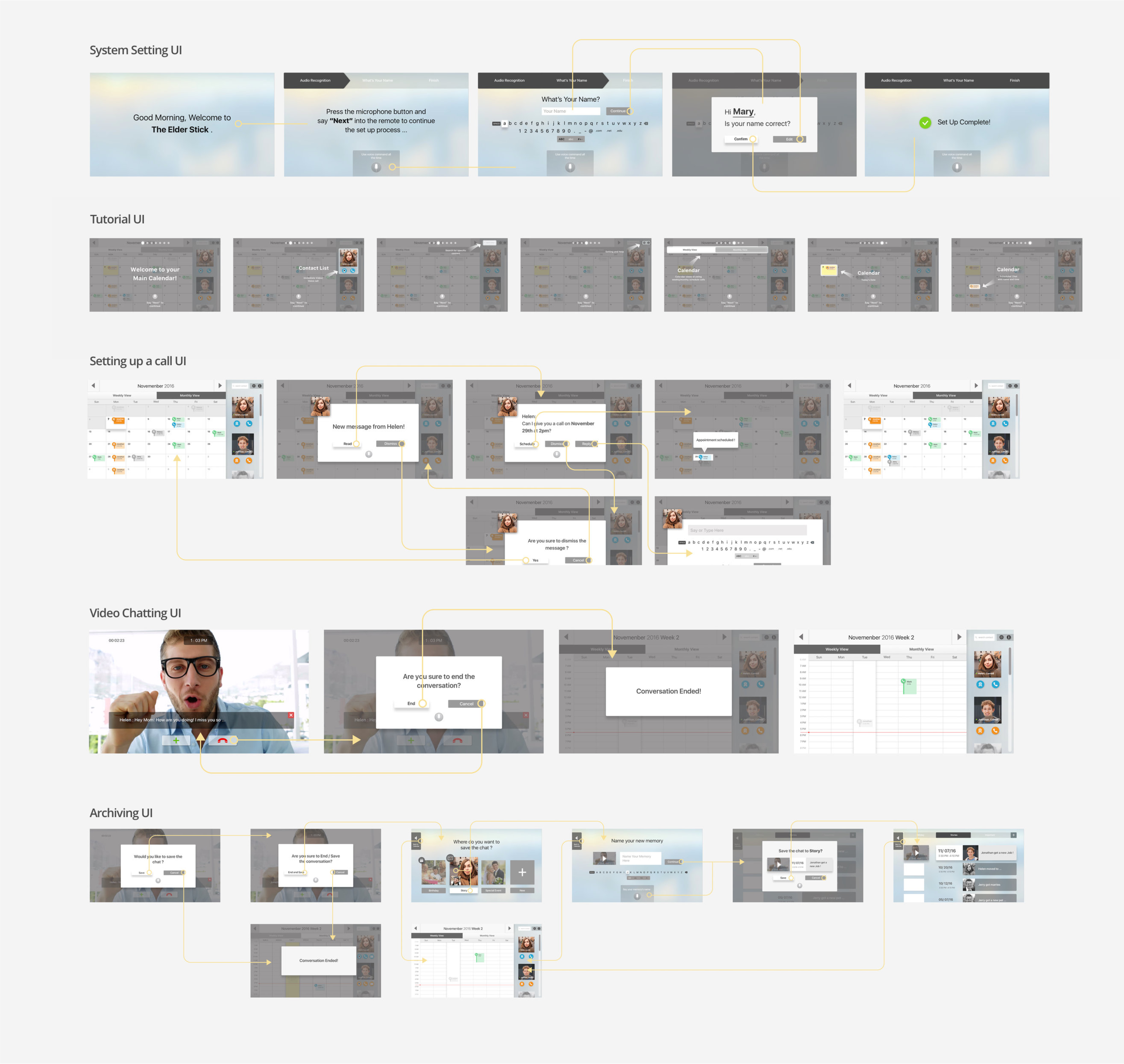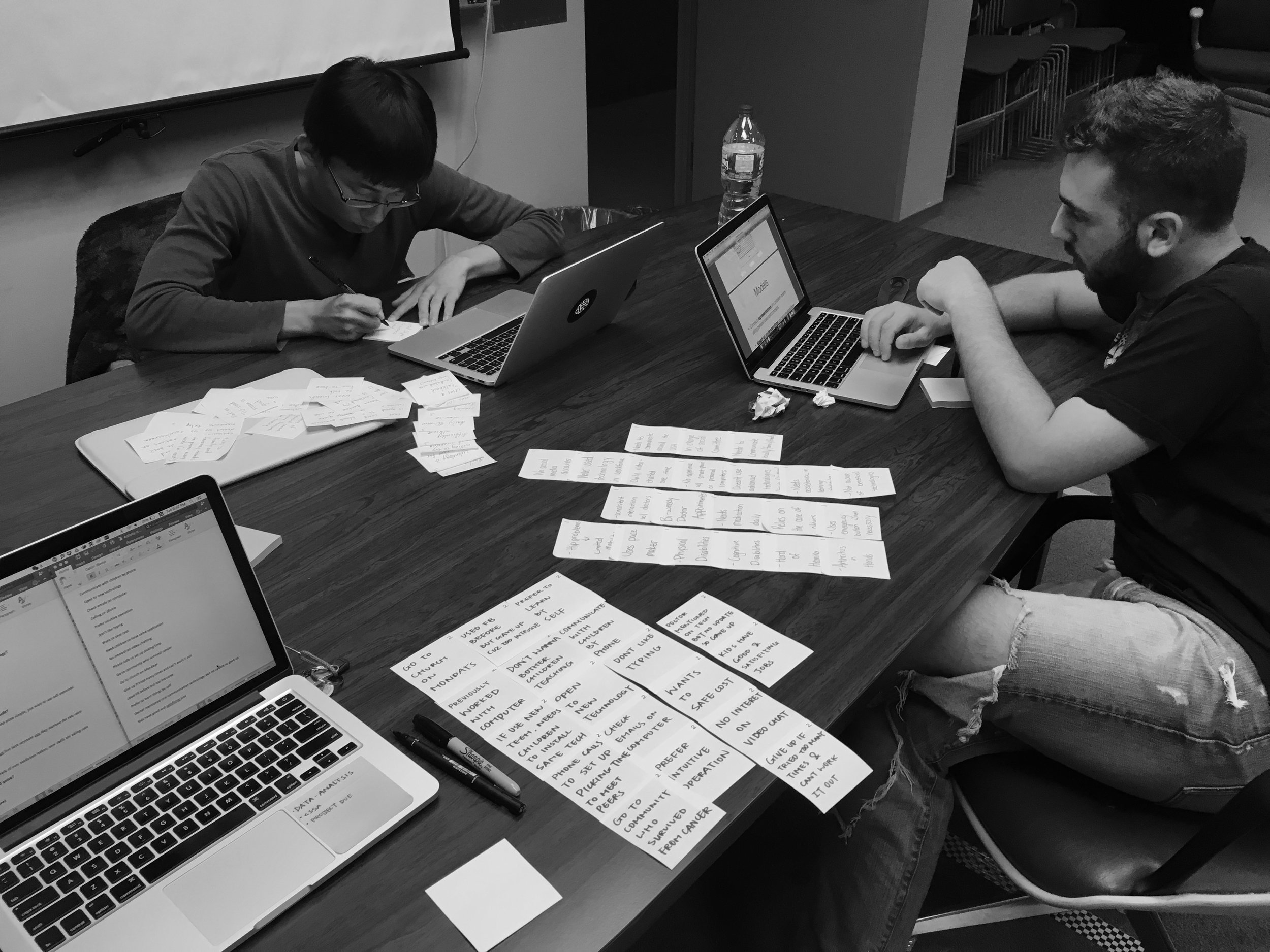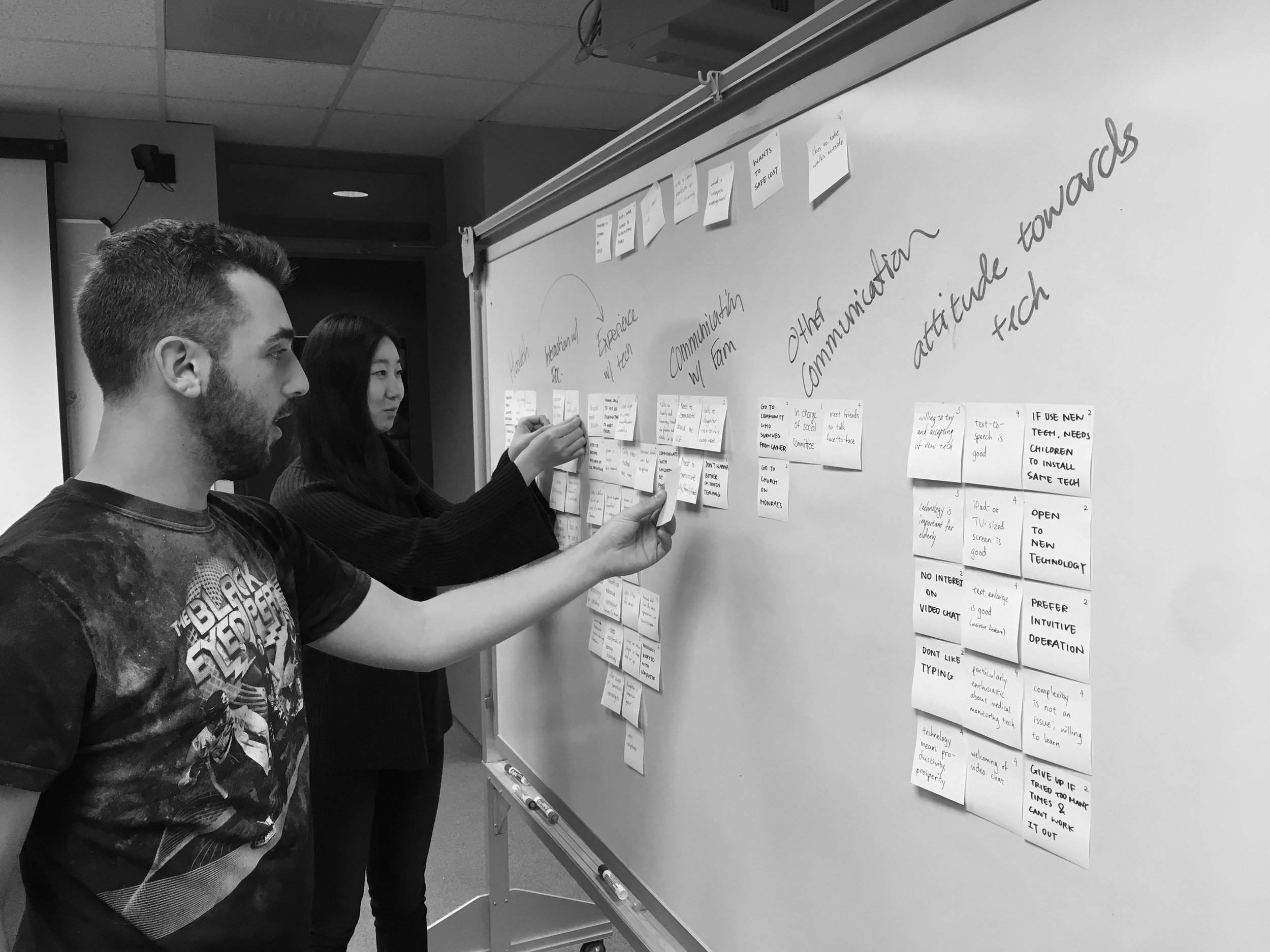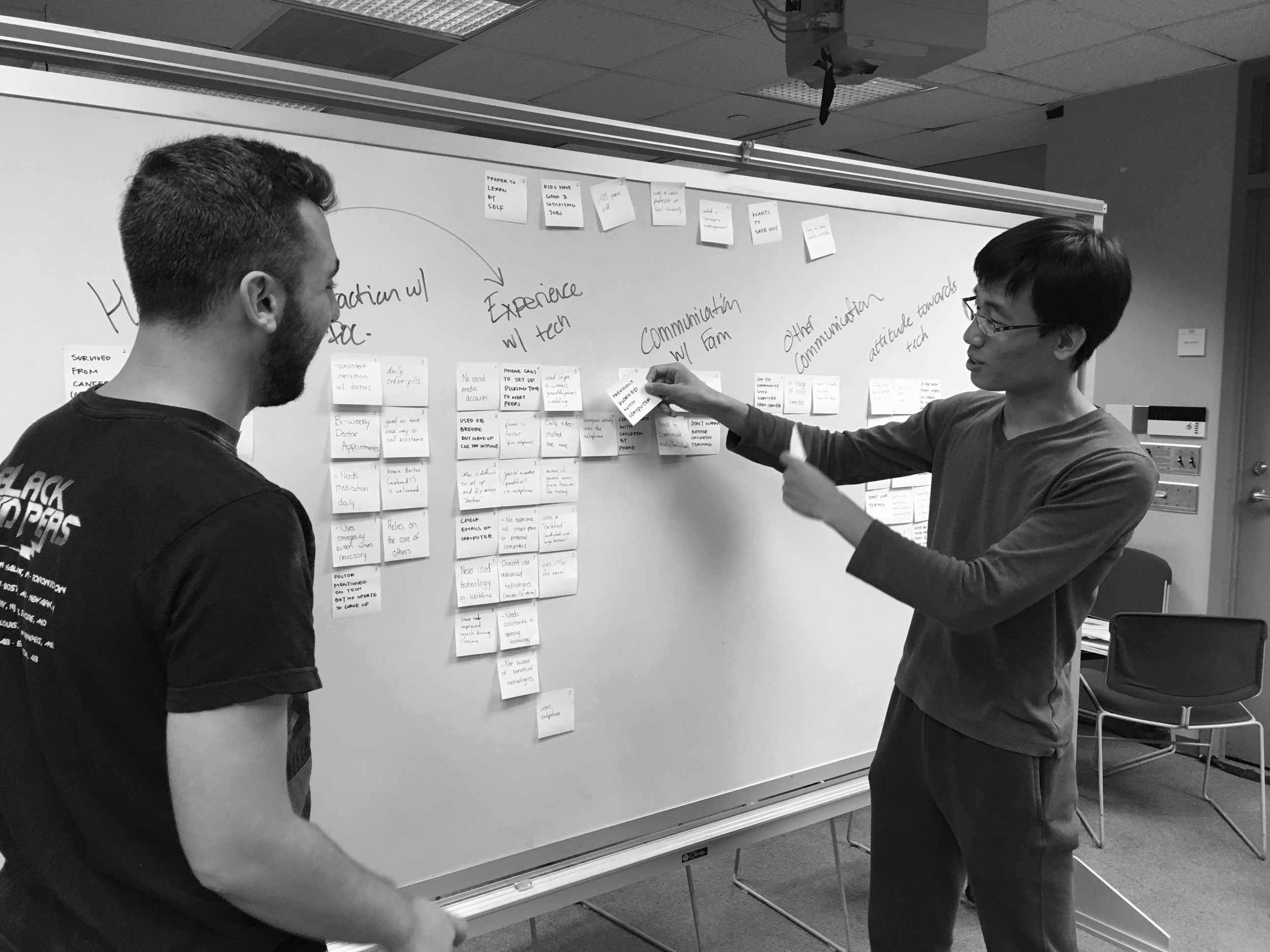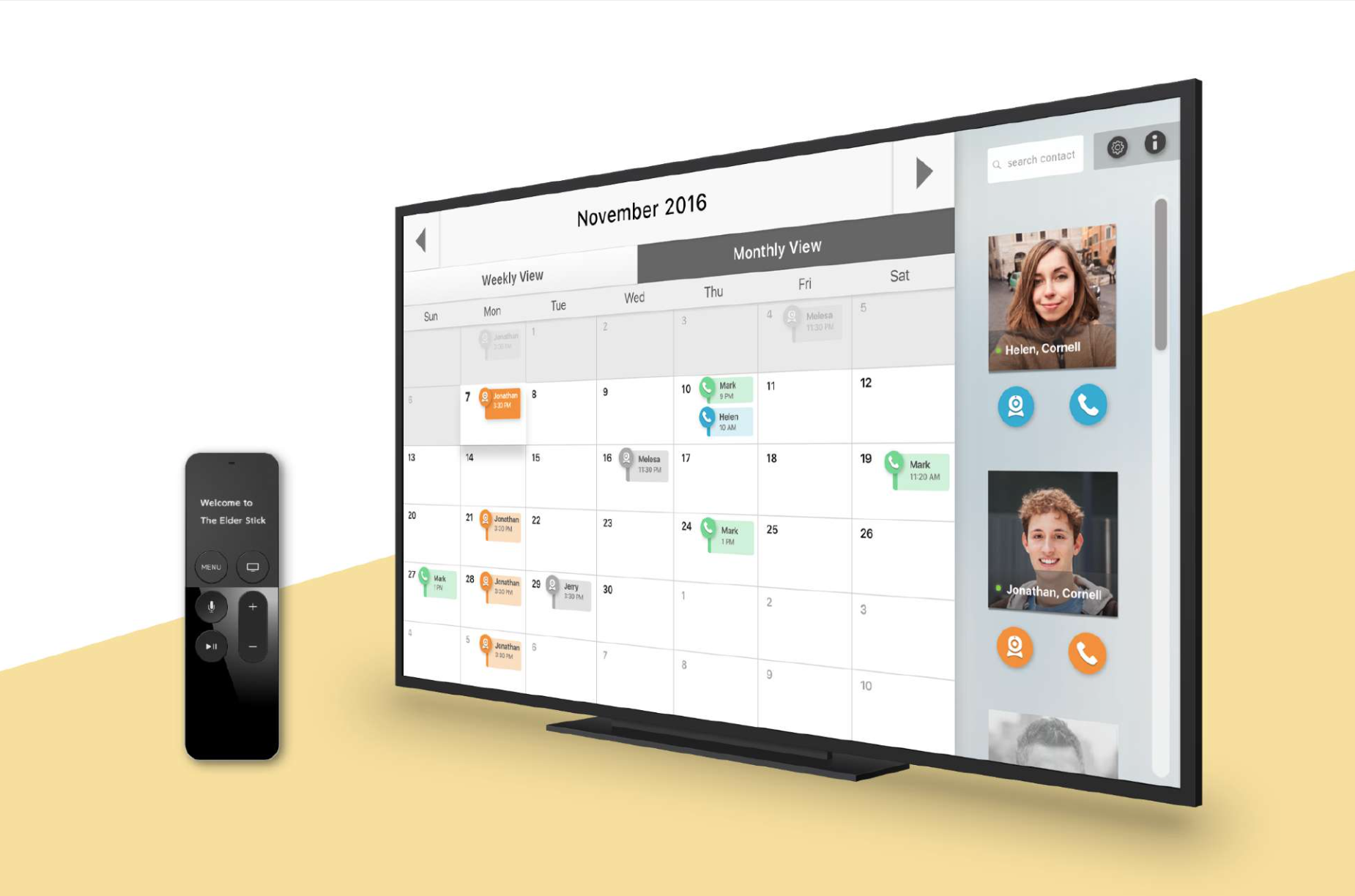
The Elder Stick
TV App Product Design | 2016 Fall

Objective
A significant proportion of the elderly have been and are being left behind by the communications technologies of the twenty-first century. We think that the design of these technologies often lacks consideration for the elderly, who especially struggle with features too small, too fast, too crowded. The shortcomings of design account for the unfortunate popular illusion that modern communication technologies are just too esoteric and too divorced from common intuition for the elderly to grasp. We wish, in our design project, to address this issue and contribute towards the building of a level playing field where communication technologies can empower truly everyone.
Role: User Researcher, Product Designer
Team: Xin Lin, Albert Zhang, Jiaming Zhang, Ethan Arnowitz
Understand The Problem
- Communication technologies are currently well used among the elderly, why and where possibly the line between used and unused should be drawn?
- What are the relationships between particular design choices and the usage of the product, and which may be related to the abilities and disabilities common among the elderly?
- How to facilitate elderly's willingness to accept modern communication technologies?
Understand The User
1. Interview
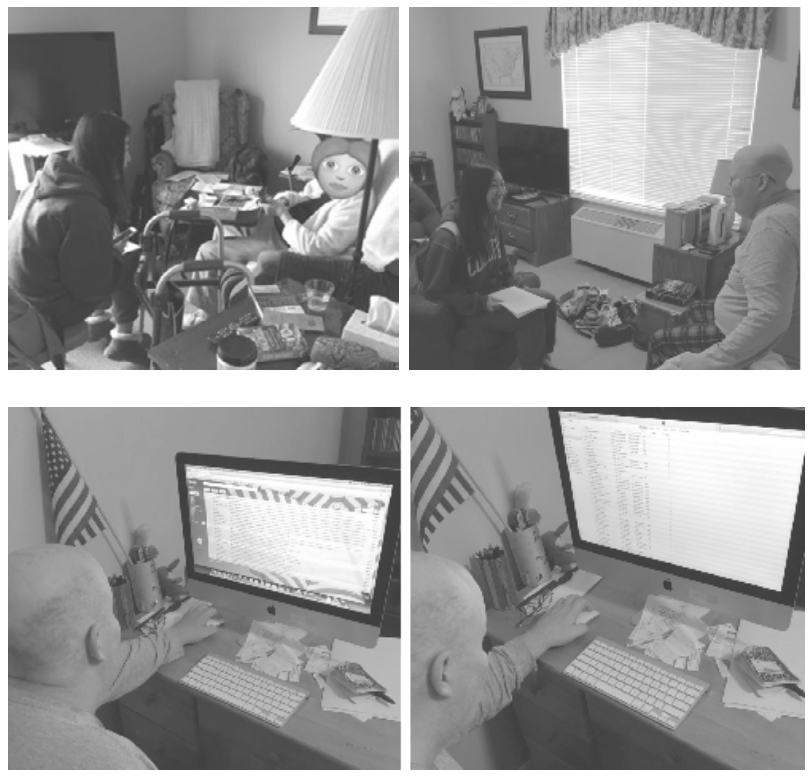
Through this interview process our team was able to gather critical information from the perspective of our end-user, the elderly population. Our process included interviewing four elderly citizens, with a range of technical abilities. Through these interviews, we understand what technology the elderly currently use, attitudes toward technology, how the elderly currently use technology to communicate, and common physical and cognitive limitations that the elderly often face.
2. Analysis + Social Model

3. Affinity Diagram

We organized participants’ responses from interview and mapped them out to find out common catergories.
Key Insights
- Experience with technology
- Health
- Attitude towards technology
- Communication with friends and relatives
- Communication with doctor
3. Persona

6. User Requirements
1. Experience With Technology
- Setup Efficiency of Technology: Reducing the amount of effort elderly need to spent on setting up devices/applications and giving them more confidence in usage.
- Execution efficiency of the system: Allowing users to perform different functionalities efficiently. The fewer steps needed to perform a specific functionality, the simpler it is for elderly.
- External Help and Assistance: Providing efficient help on the system to allow elderly to broaden their access to assistance.
2. Health
- Mobility of the System: Interacting with the system remotely, without going to another fixed location.
- Assistive hearing/Visual techniques: Providing users with effective hearing assistance to allow smooth interaction.
3. Communication
- Transmission of content-rich information: Exploring more possibilities, such as video, beyond mere text and audio information, which provides more satisfaction and opportunities.
- Easy access to families and friends: Empowering elderly with easy access to reach out to the people they valued.
Design Ideation
1. Brainstorming
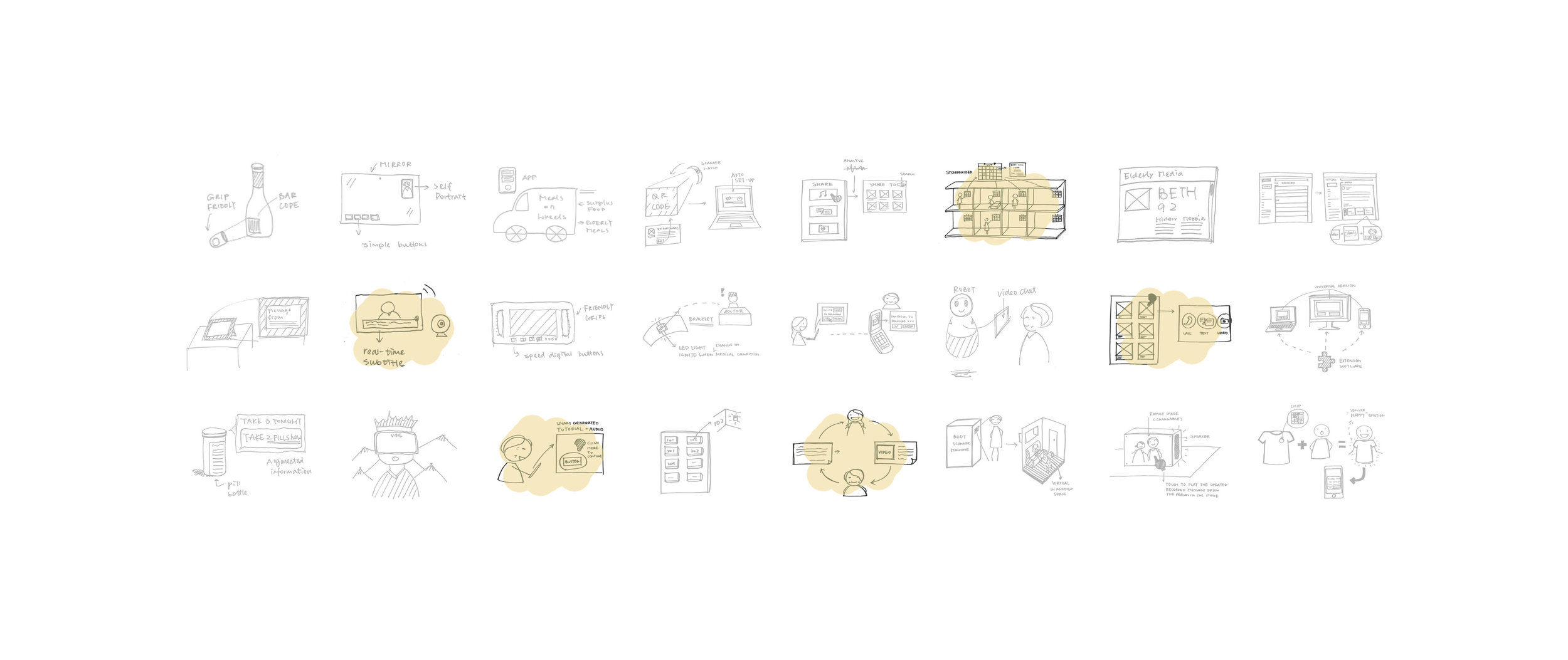
2. Storyboarding

Prototyping + User Testing
1. First Iteration - Paper Prototype

2. User Testing for Paper Prototype

3. Second Iteration - Invision Prototype
Invision Prototype Link: https://projects.invisionapp.com/share/TJ98SQEUF#/screens/203371366
4. Inivision Prototype User Testing + Evaluation
Goals for Evaluation
(1) User satisfaction with the interaction;
(2) Effectiveness of the assistive features of the technology;
(3) Efficiency in set up;
(4) The memorability of steps to perform tasks;
Sample User Testing
1 Facilitator | 1 Note taker | 1 Interviewer | 5 Participates
Tasks One: Set up Elderly Stick
Tap the microphone button on remote and say “hello” / Press “begin” button on remote
Tap the microphone button on remote and say “[name]” / Enter Name using the remote
Set up complete page
Task Two: Execute an upcoming appointment
Tap the microphone button on remote and say “Take” / Press“take” button on remote
Talks to the person from other end
Press “end” button on remote to end the conversation
A window pops up - “Are you sure you want to end this conversation?”; Press “yes” button to confirm.
Task Three: Simulate leaving a legacy
Tap the microphone button on remote and say / Press “yes” button
Save the session into a category: Tap the microphone button on remote and say “stories”/ Press down button two times, and then press “yes” button
Key Take Away
In the name input interface, the microphone button does not offer enough visual cue to allow user to understand that it refers to voice input on remote.
The color coding in the calendar interface, instead of offering clear mapping for participants, it complicates the interface by making mapping from contact to appointment more difficult.
Lack of visual indication on calendar interface that informs users of voice as a means of input. Participants were unaware that they can use voice in the calendar interface.
The monthly/weekly view option is not apparent to users and the information presented on monthly view lack appointment details for elderly users. Some participants did not notice the existence of weekly view and complained about the lack of information on monthly views.
The transition from the completion of setup to calendar interface is too abrupt.
5. Third Iteration - Improved Inivision Prototype
Calendar Main Page Interface
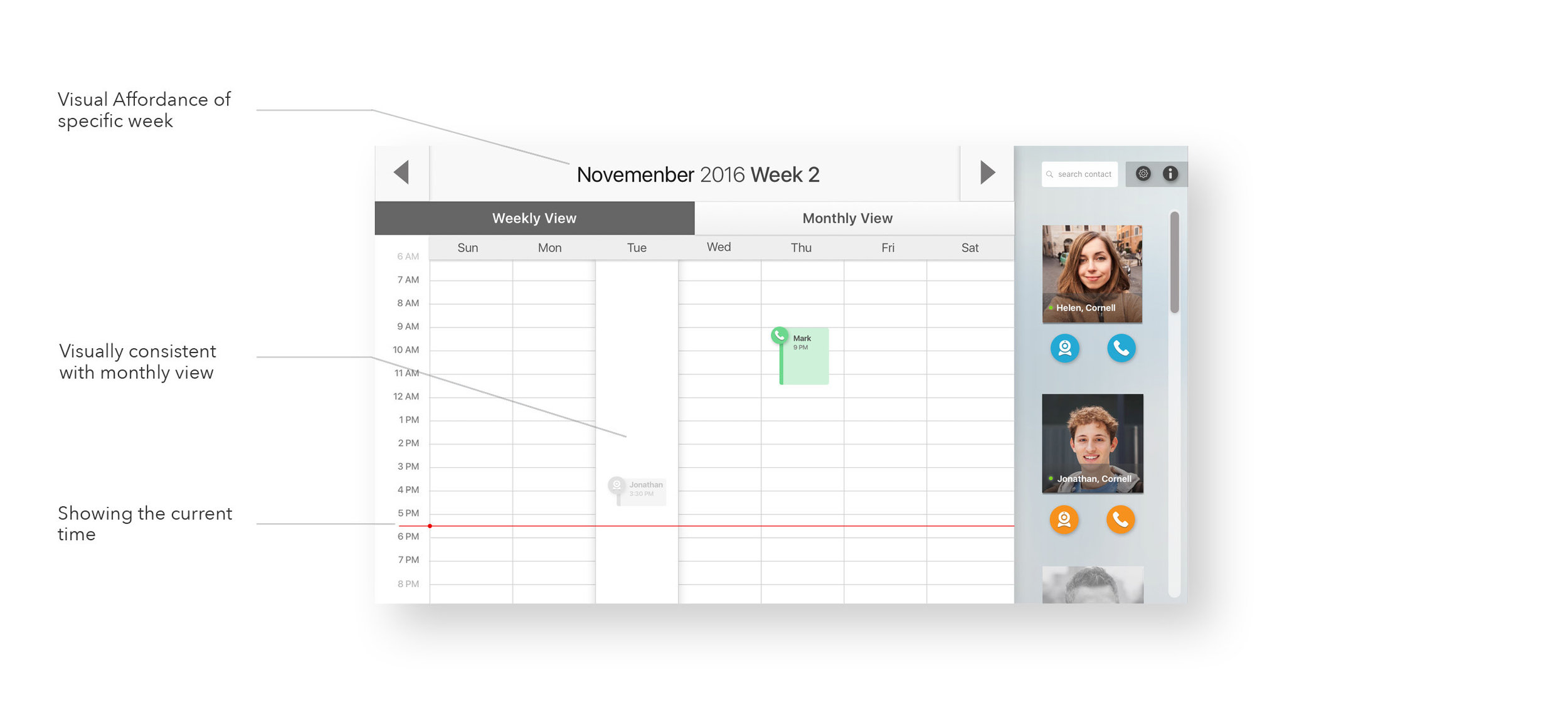
Weekly View Interface
Interface of other key features
